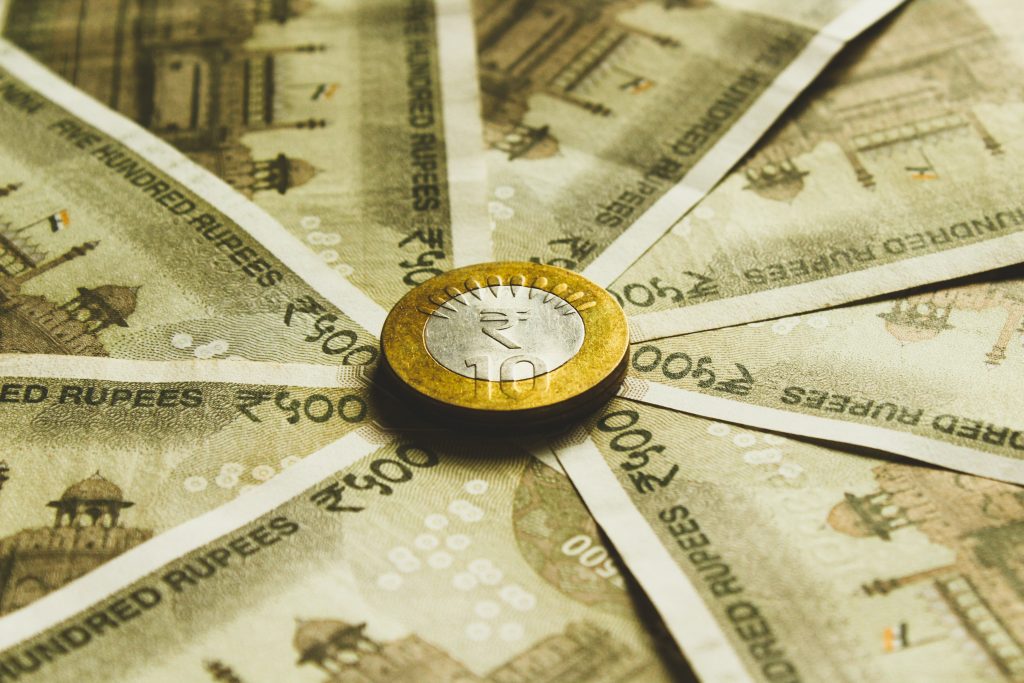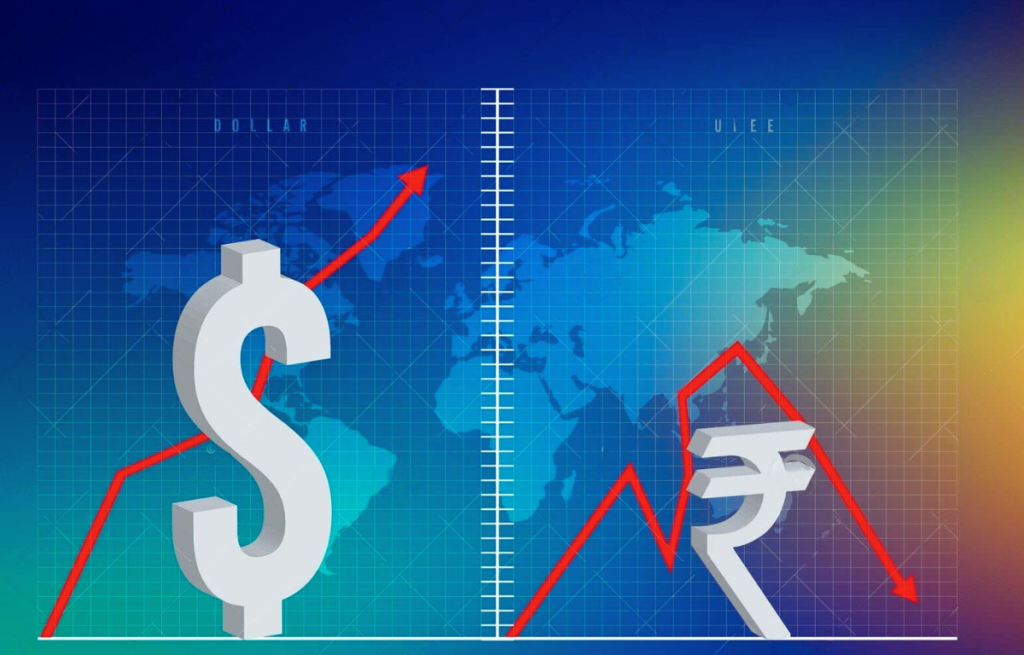Table of Contents
ToggleImagine if you could buy the latest version of the iPhone for just Rs. 1400. Or even better, what if you could have luxury cars such as Mercedes, Porsche, Ferrari or Tesla in your parking lot for just Rs. 1 Lakh! Impractical, right? Although now it seems to be impractical, this wasn’t the case when India got independence. Back in those days, the Indian rupee was at par with the US Dollars. That means there was a time when 1 INR = 1 USD. Those were the actual golden days. At present, the US Dollar has exceeded the 70-rupee mark. The graph below shows how the USD is set on a consistently increasing path with no plans to decrease in the future. This brings us to a serious question for all the investors: Investing In Dollar Vs Investing in Rupee – Which is better?
This blog is written keeping in mind all the age groups. Whether you are a student who is just about to start investing or a mid-career investor, we have quality information for all of you. Read till the end to know everything about INR vs USD investing. All your doubts and queries will be resolved by the end of this article.
Investing In Dollar Vs Investing in Rupee – Which is better?

Is it a rhetorical question? Some of you may answer yes but some of you may disagree. Let’s view this question from a neutral perspective and analyse all the facts.
The past year of 2020 has shown some incredible results proving it to be a historic year for the Indian share market. Some indices gave 100% return in just a span of one year. However, investing globally assists you to diversify your portfolios to a broader level and seizing various international opportunities. After all, nothing is more expensive than a missed opportunity.
Another enthralling fact that you must know is that the average rate of depreciation has been 3.5% annually. This implies that you can earn extra returns as compared to US investors if you enter the international investment market.
For example, if an American investor receives up to 8% returns then you can get roughly 11.5% returns on the exact same investment. In even simpler terms, you buy a dollar today for Rs. 70 and you invest the dollar in some international avenues which earn you handsome returns. Including the average depreciation, you will get Rs. 73 back on the same Rs. 70 invested and you get the cream layer that is the returns. This way you earn extra on exchange rates besides the Return on Investment (ROI).

Another undeniable fact is that the demand for dollars will increase like never before. The post-COVID-world will witness people crossing every possible limit to compensate for the quarantine period. This will lead to a boom in tourism, education, entertainment, finance and all other sectors. Given this argument, investing in dollars would be a better option.
Summary: There are a plethora of options available in the domestic market. The extra return from the depreciation of the rupee is the cherry on the cake. In the present context, the vaccines developed by American companies like Pfizer and Moderna will increase imports from the US. So, it will directly lead to the strengthening of the US dollar.
Hence, we conclude that the answer to the question: ‘Investing In Dollar Vs Investing in Rupee – Which is better?’ would be the former one.
If you are looking forward to becoming an international student and need assistance with student loans, all you have to do is fill this form ➡️
The Great NRI Dilemma — Rupee or Dollar? | USD vs INR Investing
Non-resident Indians have an abundance of investment options available due to their situation and thus face even more difficulties when choosing: Investing In Dollar Vs Investing in Rupee. Let us determine the best option based on the various categories of NRIs.
Broadly speaking, there are three categories of NRIs. First, those who are abroad on an assignment and plan on coming back to India. Second, those who have settled permanently abroad and do not plan to come back. Third, those who are abroad, have no immediate plans to come back but ‘may’ decide to come back at some point.
For the first category, investing in rupees is the most logical thing because investment is no temporary commitment. If you do not plan on staying in the US then it is better not to taste the water of US share markets.
For the second category, know that Indian markets are great only if you plan to use the money in India. For all local needs in India, the investment in the rupee is a good deal. However, apart from this particular clause, all the other investments made in dollars will be more beneficial.
In the case of the third category, things are a little difficult to sort out. If you have no concrete plans on returning to India then do not concretise your rupee investments either. Remember that the long-term depreciation of the rupee against the dollar is 4-5% annually. Even if you decide to eventually come back, you can earn 4-5% by simply holding in dollars instead of the rupee.
Investing In Dollar Vs Investing in Rupee -How To Invest In Dollars?
Indians have no shortage of options for investing in the Indian markets. However, difficulty arises when you wish to invest in dollars. So, what are your options? Let’s have a look.
International Stocks – Google, Facebook, Microsoft and Amazon are some names that almost every person has heard. The good news is that now you can also become a part-holder of these companies. This can be done by investing in international stocks through domestic institutions in collaboration with a foreign broker. Or you can even approach a foreign broker directly to avoid paying ‘an extra brokerage fee’. It will help you in getting more returns as compared to the former. Similar to international stocks is ETF and you can explore this option as well.
Recommended Reading: What Is An ETF? A Beginner’s Guide
Mutual Funds – Investing in international stocks sounds fascinating but you may not be aware of all the laws and the higher charges involved in international transactions. Hence, mutual funds are considered the best and safest investment route for global investing. It frees you from all the troubles and is a cheaper alternative to investing in stocks.
Read More: 8 Easy Ways On How To Make Money On Amazon
Apart from these two options you also have the option to invest in debt instruments or trade literally in dollar currency.
FAQs
Q1) Is it wise to invest in US dollars?
Ans: During periods of high inflation or crises, the value of the dollar tends to rise. Consequently, investing in dollars becomes a lucrative option, as investors can expect higher returns driven by the economic indicators of the United States.
Q2) How much dollar can an Indian citizen keep?
Ans: Indian residents are permitted to carry up to Rs. 25,000 in cash. There is no specific limit on the amount of foreign currency that can be brought into India. However, it is mandatory to declare amounts exceeding US$5,000 in notes and coins, or US$10,000 in notes, coins, and traveller’s cheques.
Q.3) How much can 1 dollar buy in India?
Ans: 1 USD = 83.21915 INR, hence anything worth up to this amount can be bought.
Q.4) How do I invest in dollars?
Ans: You can invest in dollars through stocks, mutual funds, etc.
Q.5) How can I sell my dollar in India?
Ans: In India, you can convert USD to INR either at banks or at money changers approved by the Reserve Bank of India (RBI). To perform currency exchange at banks, it is necessary to have a bank account with the respective bank.
Thank you for reading this blog ‘Investing In Dollar Vs Investing in Rupee’. If you enjoyed reading this blog and would like to continue reading more about investment and earning money then do check out our following blogs.


















Recent Posts